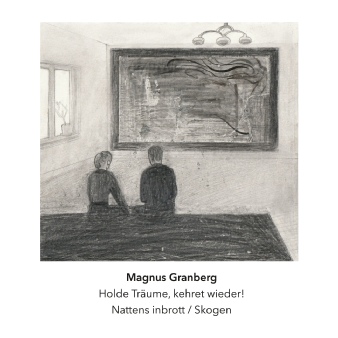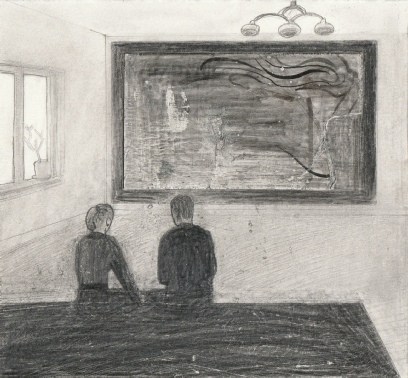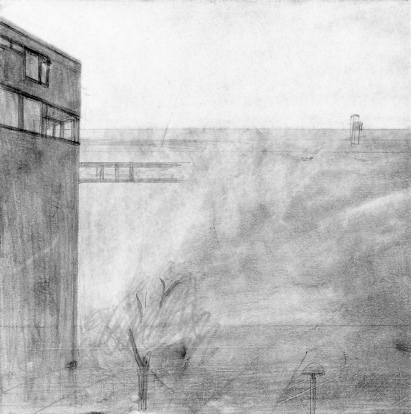Another Timbre TimHarrisonbre

at225x2 Magnus Granberg ‘Holde Träume, kehret wieder!’
Double CD containing two realisations of the same piece, one for quartet, the other for septet.
NB Unfortunately the discs on the double album are incorrectly labelled. The red disc, which says Skogen, is actually the version by Nattens inbrott, and the blue disc, which says Nattens inbrott, is actually by Skogen.
Very sorry for this error and any confusion caused. On Bandcamp the files are marked correctly; the error only applies to the physical CDs
Disc One
Holde Träume, kehret wieder! Version for quartet, played by Nattens inbrott 44:44
Vilde Sandve Alnaes, violin Inga Margrete Aas, double bass
Magnus Granberg, prepared piano Erik Carlsson, percussion
Disc Two
Holde Träume, kehret wieder! Version for septet, played by Skogen 45:01
Anna Lindal, violin Leo Svensson Sander, cello Stina Hellberg Agback, harp Erik Carlsson, percussion
Magnus Granberg, prepared piano Henrik Olsson, objects, friction Petter Wästberg, objects, contact mics
Interview with Magnus Granberg
Can you tell us about the title; where does it come from and what is its significance?
The title is culled from the last line of a poem by Matthäus von Collin which was set to music by Franz Schubert and published in 1825 under the title ’Nacht und Träume’. The title, ’Holde Träume, kehret wieder!’ could be translated to ’sweet dreams, come back!’ or ’fair dreams, return!’ (Richard Wigmore’s translation). It’s a lovely song, which in its most obvious and literal interpretation is about night and dreams and the longing for the night and the dreams to return when waking up to a new day. After having finished the piece I also by chance realised that ’Nacht und Träume’ also is the title of one of Beckett’s late, minimal (and in this particular case more or less wordless) plays for television, in which the last line of the song is first hummed and then silently sung by a male voice, possibly by the main (or even sole) character if I remember correctly.
Schubert as reconfigured by Beckett isn’t a bad description of your music! I feel there’s an underlying romanticism, but it coexists with, or perhaps is buried deep beneath, a late modernist sensibility that is melancholic bordering on despair.
Yes, that’s actually quite a good description and analysis of my music, I guess! I have of course constantly been returning to Schubert over the years and reading Beckett (particularly his late prose works such as ’Company, ’Worstward Ho’ and ’Ill Seen, Ill Said’) was certainly of great importance and even something of a revelation to me in the early 2000s when I made my first attempts to reorient aesthetically after having lost faith in playing jazz and playing the saxophone.
In most of your compositions, a lot of the music is derived by substantially re-working existing pieces. Is this the case here too, and if so, what is the source material?
Yes, listening to and being very moved by ’Nacht und Träume’ served as an impetus to write something myself, and the song itself accordingly served as a starting point for the new piece. That being said, there are no extensive quotations except for the use of the rhythmic structure of the last line of the song. Apart from that the materials of the song mainly served as a point of departure: rhythmic phrases were fragmented and divided into tiny cells that were treated and recombined in various ways, and parts of the tonal structure were used as a point of departure when creating a new, modal framework for the piece.
As ever, there is so much improvisational input that - although I could easily identify both realisations as being your music - I don't think that I could have identified them as being the same piece. That may just be due to my lack of musical training, but does it matter in any way? Do you want your compositions to be identifiable as individual pieces, or are you happy for them to become part of a large but somewhat undifferentiated pool of music?
Well, that hasn’t really been that important to me so far. On the contrary I have often considered the individual pieces to be landscapes which could be perceived very differently depending on whom is traveling through them and how and when it is done, since there are so many (innumerable) ways of traversing them. And in a way I have also often considered the individual pieces all to be a part of a larger but very similar landscape, or perhaps like different outcomes of the same (or slowly evolving) genetic constitution, to use another analogy. Lately though, I have been experimenting with other ways of approaching the materials, trying to explore other potentials and organisational dynamics in the music which are situated on different positions of the spectrum of coherency and consistency on the one hand, and indeterminacy and individual and collective freedoms on the other. This is partly related to the question of writing music for musicians and ensembles with different schoolings and trajectories in and through music in a way which feels comfortable for the musicians while at the same time hopefully yielding a consistent, coherent, lively and interesting result, but also to the question of exploring inherent potentials in the materials themselves and the many possible ways of organising them.
This is a double album, consisting of two different realisations of 'Holde Traume', a septet version by Skogen, and a more minimal version by the Nattens inbrott quartet. Did you envisage this possibility of two different ensembles realising the piece for different instrumentation from the start of the project, or was it something that happened by chance?
Well, even if that’s almost always a latent or tacit possibility, I actually originally wrote the piece in order to have something to play with Nattens inbrott, a new quartet with myself, percussionist Erik Carlsson and two fabulous Norwegian string players, violinist Vilde Sandve Alnaes and double bass player Inga Margrete Aas, perhaps best known from their brilliant string duo Vilde & Inga. Around the same time (which was still during the pandemic) I realized that we should try do something with Skogen as well, but since I didn’t have the time to write a new piece, I simply decided that it perhaps could be interesting to hear how the piece would turn out when being played in two different settings and by partly different musicians. So I simply wrote some additional parts for Skogen and then we recorded the two different versions on two different occasions with just a few weeks in between, both being recorded at Atlantis here in Stockholm.
That’s interesting. Did Vilde & Inga approach you about forming the quartet, or did you suggest it to them? (And what does Nattens inbrott mean, by the way?) Obviously the musicians in Skogen know your work intimately, and have played a role in the way it has developed over the years, but the Nattens inbrott quartet also sound as if they’ve been playing your music for a long time. They’re extraordinarily accomplished, so that listening to the two realisations blind, I would be hard-pressed to say whether the quartet or septet were playing your music for the first time.
No, it was I who approached them. After having heard a few of their recordings on the internet over the years and finally hearing them play an incredible concert at Rönnells Antikvariat in Stockholm (which also happens to be where my day job is at) I was thoroughly and emphatically convinced that they would be a perfect match for my music. We have actually just played one concert yet (partly due to the pandemic) which took place the day before the studio recording, but we hope to be able to play a little bit more the forthcoming years. ’Nattens inbrott’ means ’the break of night’, which of course seems to fit the nocturnal qualities of the music as well as the source materials of the piece itself rather well, I guess.
As far as you're concerned, would it be valid for ensembles to take other scores of yours and make realisations using just some of the parts? Is this something that has happened already?
Yes, that is perfectly possible and I guess that has more or less already happened. But if so, I quite often want to adapt the pieces gently in terms of which parts may or should be used, and if the instrumentation differs slightly, I prefer to adapt and revise appropriate parts for the new instruments.

Magnus Granberg
Photograph by Anton Lukoszevieze


Artwork by Magnus Gramén, with thanks
Artwork by Magnus Gramén, with thanks